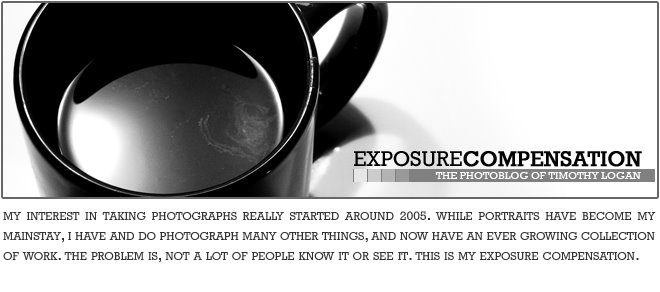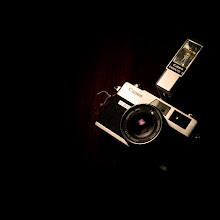09 August 2012
Impossible Project PX680 Test Film V4B - Everything Is Going To Be OK
I've been shooting these Impossible Project films for some time now. My first shots in fact, were on their PX70 First Flush, which I believe was their very first publicly available "Color Shade" film - though Color was really one of the main things missing from the film. I mention all of this because I'm still consistently amazed with how far this company's film has come in, really, what is less than two years time.
Above is another example of the new PX680 Test Film V4b with the new and improved opacification molecules. I shot this in mid-afternoon shade on my back patio after pulling all of these fine items together from around the house. Again, because of the new opacification layer, this shot was left un-sheilded as it ejected out of camera and then was left sitting face-up in indoor lighting throughout the development process. This film, which is considered 'not optimized for color', has the capability to capture some really beautiful colors. My findings thus far are that lighter, brighter colors will inevitably blow out or expose as a brown/cream color, but, that darker, saturated colors will render just fine.
As I noted in my initial review of this film (which you can read in it's entirety here) this films development time seems to be longer than previous film versions - my original estimate of a full development being around 30 minutes. I'm starting to notice though, that the "full" development of this film might be taking even longer than that. If I had to equate it to something I would put it in a similar category with PX70 PUSH film in that it appears to be fully developed in about 30 minutes time, but, the color tones and contrast will continue to shift over the next few hours (if not longer). An example of this can be seen below (full view available for best comparison):
This shot is one that I took walking into work one morning last week. I waited for what seemed to be the full development time of about 30 minutes before scanning this image. I pulled it up to crop and resize for the web and decided it wasn't a shot I really liked, so, I set it aside and didn't end up posting it. Later in the week I revisited the photo while scanning the earlier image in today's post only to notice that the image seemed to have changed. The color had shifted away from an overly reddish/magenta tone and the contrast of the image had increased slightly. The whites were now truly white, and , the highlights were more developed if not a touch more overexposed.
This might not seem like a big deal to many, but, I've always attempted to scan my Impossible film as soon as possible after development to try and beat the unattractive color shift that many of the early versions of the film were known for. Now, it appears that waiting it out can actually give you better results in the end - even if it means just waiting a few hours longer than normal.
I feel like now is a good time to note that it may seem like a small freedom to not worry about shielding your images anymore, but, I must say that it has really been fun shooting this first pack of Test Film. Granted, I've become pretty used to, and efficient, at shielding my images over the past two years, but, it is definitely a nice change of pace to forget about the shield and concentrate on making the image. This is especially true when it comes to walking the streets shooting things as they naturally occur before you.
I hope to have more examples of this film and a few other instant stocks to post next week for Polaroid Week 2012. So, as always, keep an eye out for that.
Subscribe to:
Post Comments (Atom)







No comments:
Post a Comment